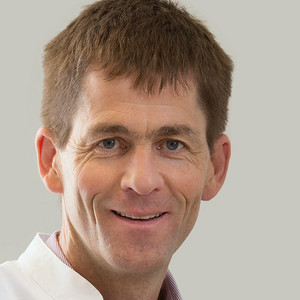
Some people who had COVID and are classified as recovered are still not really healthy and are suffering from Long-COVID in its various forms. Sometimes Long-COVID also manifests with lung symptoms. A discussion with the pneumologist Prof. Dr Rainald Fischer.
Prof. Dr Rainald Fischer: In every clinic we have at least two or three patients who come to us after having COVID-19. We are seeing as many men as women, and we are seeing all age groups. We recently even saw an eight-year-old child. Since the third wave we are not seeing anyone older than 65, which is very probably down to the effect of the vaccine.
Prof. Dr Rainald Fischer: Most had pneumonia. The severity varies. Some were hospitalised, but many who come for an examination had no lung symptoms or at least, barely any.
Prof. Dr Rainald Fischer: We are seeing a lot of cases of bronchial hypersensitivity. Patients complain that they find it hard to breathe, lack stamina and are breathless and exhausted even after the slightest exertion. We do not see restrictions, specifically a drop in lung volume, so often in these patients. What we do, however, often see is limited diffusion capacity, which means that the alveoli are less permeable to oxygen. This is usually at only 80 percent rather than 100. Imaging, such as computed tomography, often shows nothing but patients still report restricted function.
Prof. Dr Rainald Fischer: Asthmatics who had COVID often get over the infection more easily. This is because they often inhale glucocorticoid spray as a standard therapy or use it as soon as they find out they have COVID-19. There are the first indications in studies that these sprays can mitigate against severe cases of COVID-19. We do not see many COPD patients with COVID and Long-COVID, even though we do have one or two patients from the first wave who are still struggling after being ventilated for a long time.
Prof. Dr Rainald Fischer: It is almost exclusively those who had severe or very severe COVID who present with long-term symptoms and restrictions of the lung. In patients who had severe COVID, you can often see changes on X-ray and they often have restricted function. The FEV1 lung function value tends to be under 90 percent. Sometimes bronchial resistance is increased, which means that the lung is slightly overinflated. As soon as someone with COVID-19 develops a lung infection, you can assume that the lungs and body are going to take a certain amount of time to recover. This generally takes two months but can drag out up to half a year or more. Patients have to be patient! It takes time for the lungs to completely recover and heal.
Prof. Dr Rainald Fischer: If the pneumonia, triggered by COVID, is still active, we give cortisone tablets. If a bronchial hypersensitivity reaction occurs, dilating sprays can help the bronchial tubes, usually inhaled with a holding chamber, such as VORTEX. There are also patients who use a nebuliser to inhale a 0.9 to 3 percent saline solution during or after COVID-induced pneumonia. A saline solution of 0.9 percent keeps the bronchial tubes moist and relaxed, and a 3 percent saline solution helps to mobilise secretions.
Prof. Dr Rainald Fischer: Generally, they will use a nebuliser once a day for several weeks or months, depending on their symptoms and needs.
Prof. Dr Rainald Fischer: Some patients go to respiratory physiotherapy where they are treated with reflective breathing therapy. Respiratory physiotherapy is prescribed if a patient has certain clinical restrictions. Some patients go to physiotherapy of their own initiative.
Prof. Dr Rainald Fischer: If someone has had COVID-19, but has no problems with their lungs, they do not generally need to worry. This means that the lungs have not been damaged. If patients have persistent or long-term symptoms such as shortness of breath or they have less stamina, but imaging and lung function tests show up nothing, they should consider seeing a cardiologist because it could be myocarditis, i.e. inflammation of the heart muscle.
Note: The statements made in the interview are the individual views of the interviewee. They do not necessarily reflect the PARI view or the general state of science.
An article written by the PARI BLOG editorial team.
© 2025 PARI GmbH Spezialisten für effektive Inhalation